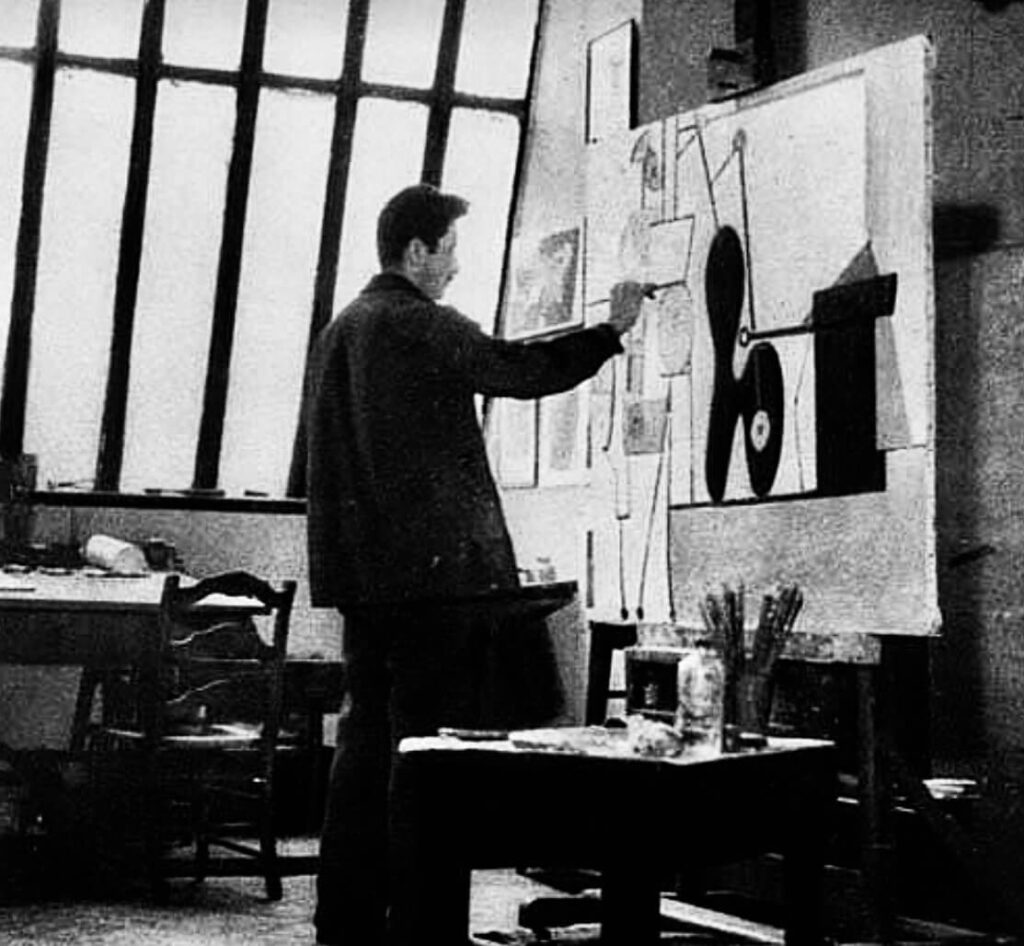Arshile Gorky
Arshile Gorky, a central figure in the Abstract Expressionist movement, is renowned for his evocative and emotive paintings. His work bridges the gap between Surrealism and Abstract Expressionism, contributing to the evolution of modern art in America. This article delves into Gorky’s life, artistic journey, and highlights three of his most notable works.

Early Life and Influences
Arshile Gorky was born Vosdanig Adoian on April 15, 1904, in Khorkom, a village in the Ottoman Empire (modern-day Turkey). Gorky’s early life was marked by tragedy; his family suffered during the Armenian Genocide, and he and his mother fled to the United States in 1920. His mother died of starvation shortly after their arrival, an event that profoundly impacted his life and work.
Gorky adopted the name Arshile Gorky in the early 1920s, a pseudonym reflecting his admiration for the Russian writer Maxim Gorky. He studied at the Rhode Island School of Design and the National Academy of Design in New York, immersing himself in the rich artistic environment of the time. Gorky was heavily influenced by European modernists such as Pablo Picasso, Joan Miró, and André Breton, as well as American artists like Stuart Davis.
Artistic Evolution and Style
Gorky’s early works were characterized by their adherence to the principles of Cubism and Surrealism. He meticulously studied and emulated the styles of his artistic heroes, particularly Picasso. However, as his career progressed, Gorky began to develop a distinctive style that combined elements of both Surrealism and Abstract Expressionism.
By the 1940s, Gorky’s work had evolved into a unique fusion of biomorphic forms, lyrical abstraction, and emotional intensity. His paintings often featured organic shapes and fluid lines, evoking a sense of movement and transformation. Gorky’s use of color was equally expressive, with vibrant hues that conveyed deep emotional states.
Notable Works
1. “The Liver is the Cock’s Comb” (1944)
“The Liver is the Cock’s Comb” is one of Gorky’s most celebrated paintings and a prime example of his mature style. The painting is a vibrant explosion of colors and forms, with swirling shapes and intricate details that create a sense of dynamism and vitality. The title itself is enigmatic, suggesting a surrealistic approach to the composition.
This work exemplifies Gorky’s ability to blend abstraction with figuration, creating a complex and multifaceted image. The painting’s rich palette and intricate design reflect Gorky’s deep emotional engagement with his subject matter, making it one of his most powerful and evocative works.
2. “Agony” (1947)
“Agony” is a poignant and emotionally charged painting that reflects the personal tragedies and psychological struggles that marked Gorky’s life. The painting features a chaotic composition of fragmented forms and intense colors, evoking a sense of turmoil and despair.
This work was created during a particularly difficult period in Gorky’s life, following a series of personal setbacks, including a studio fire that destroyed many of his works and a debilitating illness. “Agony” captures the raw intensity of his emotions, making it one of his most personal and moving works.
3. “The Artist and His Mother” (c. 1926-1942)
“The Artist and His Mother” is a deeply personal and hauntingly beautiful painting that pays tribute to Gorky’s mother, who died when he was a young boy. The painting is based on a photograph of Gorky and his mother taken in Armenia before their emigration to the United States.
This work is characterized by its somber tones and meticulous attention to detail. Gorky’s depiction of his mother is both tender and melancholic, reflecting his deep sense of loss and longing. “The Artist and His Mother” is considered one of Gorky’s most significant works, encapsulating the emotional depth and complexity of his art.
Techniques and Innovations
Gorky’s approach to painting was marked by his meticulous technique and innovative use of form and color. He often employed a methodical process, building up layers of paint and revising his compositions until they achieved the desired emotional impact. His use of biomorphic forms and fluid lines created a sense of movement and transformation, giving his works a dynamic and organic quality.
One of Gorky’s key innovations was his ability to blend elements of Surrealism and Abstract Expressionism, creating a unique visual language that conveyed deep emotional and psychological states. His use of color was equally expressive, with vibrant hues that evoked a range of emotions and moods. Gorky’s work was characterized by its lyrical abstraction and its ability to capture the complexity of the human experience.
Personal Life and Influence
Gorky’s personal life was marked by a series of tragedies and hardships, including the loss of his mother, a debilitating illness, and a studio fire that destroyed many of his works. Despite these challenges, he remained dedicated to his art, creating some of his most powerful and evocative works during these difficult periods.
Gorky’s influence on the Abstract Expressionist movement and subsequent generations of artists is profound. His innovative use of form and color, as well as his ability to convey deep emotional and psychological states, paved the way for the development of Abstract Expressionism and other forms of modern art. His work continues to inspire and challenge artists and viewers alike, reflecting his enduring legacy in the world of modern art.
Recognition and Legacy
Arshile Gorky’s contributions to Abstract Expressionism and modern art are widely recognized and celebrated. His works are held in major museums and collections around the world, including the Museum of Modern Art in New York, the Whitney Museum of American Art, and the Tate Modern in London. His influence can be seen in the work of subsequent generations of artists who continue to explore the possibilities of abstraction and emotional expression.
Gorky’s tragic and untimely death in 1948 at the age of 44 cut short a promising career, but his legacy lives on through his groundbreaking works and the impact he had on the development of modern art. His ability to blend elements of Surrealism and Abstract Expressionism, and his exploration of the subconscious mind and human emotion, continue to resonate with artists and art lovers alike.
Conclusion
Arshile Gorky was a pioneering figure in Abstract Expressionism, whose innovative use of form and color and focus on emotional and psychological expression left a lasting impact on modern art. Through his most notable works, such as “The Liver is the Cock’s Comb,” “Agony,” and “The Artist and His Mother,” Gorky explored the depths of human emotion and the subconscious, creating powerful and evocative compositions that continue to inspire and challenge viewers. His legacy as a master of abstract expression endures, leaving an indelible mark on the art world.



